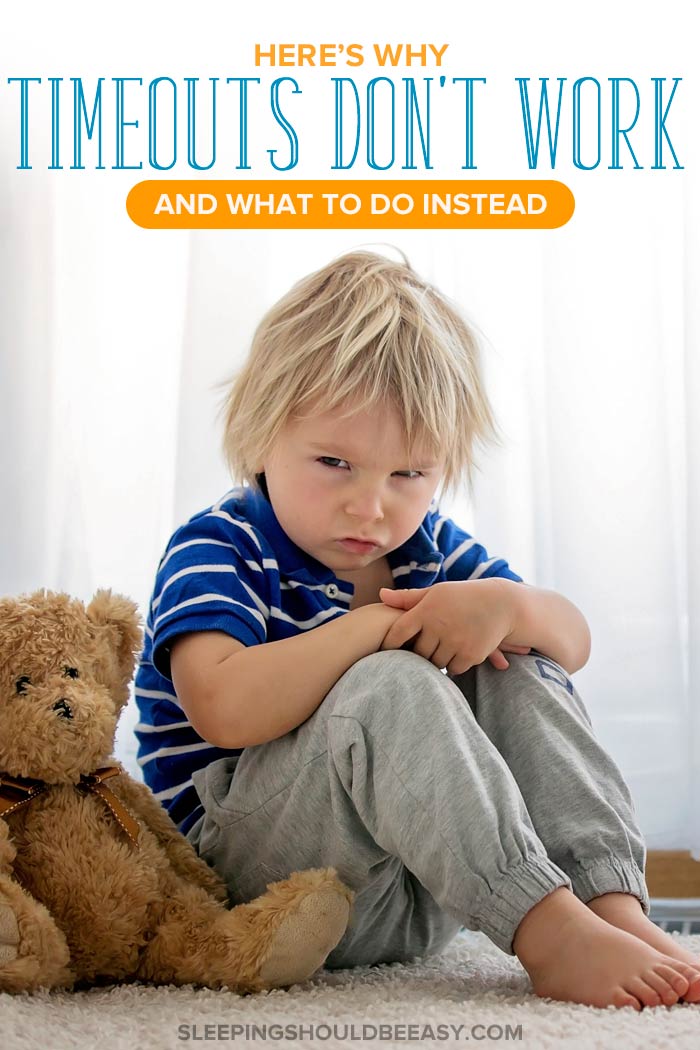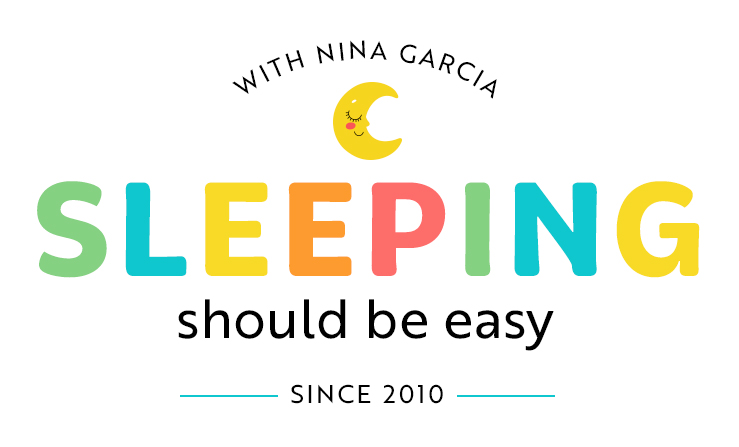Why Time Outs Don’t Work (And What to Do Instead)
Do time outs really work? Many parents use this method to discipline, but here’s why time outs don’t work and what to do instead.
 You hear it all the time: If your child misbehaves, put him in a time out.
You hear it all the time: If your child misbehaves, put him in a time out.
He can learn that those actions aren’t tolerated and that consequences follow misbehavior. You can even consult charts suggesting how many minutes per age to put him in a time out.
Except… I don’t think they work. In fact, I think there are far better ways to handle bad behavior.
You see, the more I researched and learned about time outs, the more I realized that they can cause more harm than good.
And if anyone should get a time out during a heated moment, it should be us, the parents.
Walking away to another room or taking a breather to collect ourselves is better than lashing out and losing our cool. But sending our kids to time out is not the best strategy, especially if we want them to learn valuable lessons about their behavior and choices.
Table of Contents
Why time outs don’t work
So, why don’t time outs work? After all, we hear about them so often, from television to our friends and family. We may have even grown up with time outs and assume we should do the same.
But there’s more to timeouts than we think. Not only is it an ineffective method in the long-term, but it also doesn’t serve our kids well.
Take a look at these compelling reasons why time outs don’t work. More importantly, learn what you can do instead:
1. Time outs isolate kids
Of course, you might say. That’s the point, right? Punishment means removing the things kids enjoy. No people, no toys, no fun. Sit and learn your lesson.
Except… they’re not learning their lesson.
Alone in that corner, your child isn’t thinking about why she shouldn’t have hit her sister. She doesn’t realize it’s her actions—and not her as a person—that need to change. Nor does she reassure herself that her feelings are valid, or that she’s loved no matter what.
No, she’s still fuming at the unfairness of it all. She doesn’t understand why she’s punished when her sister ruined her building blocks. She might even think she’s a bad person for deserving this time out.
Why? She has nobody talking to her about these issues. She’s all by herself.
Free resource: Do you struggle with getting her to listen? Join my newsletter and discover the ONE effective word to get her to listen and follow instructions. Grab your PDF below—at no cost to you:
2. Time outs don’t acknowledge your child’s feelings
Disclosure: This article contains affiliate links. As an Amazon Associate, I earn from qualifying purchases.
When we send our kids to time out, we overlook the underlying and valid reason they acted up in the first place. We’re not “honoring the impulse,” a term coined in the book, Becoming the Parent You Want to Be by Laura Davis.
For instance, my toddler had a horrible habit of hitting others. My first reaction was to isolate him. Hitting warrants a serious reaction, I reasoned.
Except I didn’t address his frustration. In his mind, he was hitting his brother because he didn’t want his toy taken away and had no other way to say so.
Hitting is never the appropriate way to express frustration, but in sending him to a time out, I didn’t acknowledge the underlying reason. For all I know, he might think he gets a time out whenever he feels upset.
We also don’t get to ask ourselves whether their misbehavior was normal when we whisk our kids off to a time out. We don’t realize that hitting, no matter how inappropriate, is still common for toddlers, or we forget that he skipped a nap and was feeling tired.
These aren’t excuses for hitting, but understanding their motive reveals that their frustration is valid.
Lastly, time outs embarrass our kids. Making them feel bad—whether through embarrassment or punishment—isn’t the goal of discipline. The goals include things like learning acceptable conduct, regulating emotions, or following directions, not feeling terrible about themselves.
3. Kids learn that negative feelings should be ignored
The biggest mistake we make with our kids’ emotions? We judge them. We embrace our kids when they’re happy, excited, and in a good mood, but send them off on their own when they’re angry, frustrated, or sad.
Time outs teach them that negative emotions should be hushed or ignored, not sorted or dealt with. We tell them, “If you’re going to be that loud, then go cry in your room.” All because we don’t want to sit with them during their sad or angry moments.
And we repress and label certain emotions as bad instead of for what they are: feelings that come and go. Nor do these feelings define who we are—we feel bad, but we’re not bad people.
This doesn’t mean we smother them with hugs and affection when they’re frustrated. Some kids need time and physical space to settle their emotions and be alone, but they should know that we’re always here and nearby when they’re ready.
4. Kids don’t learn to regulate their emotions
During time outs, kids don’t have us nearby to help them regulate their emotions. We can’t discuss their feelings or reassure them that unsettling ones are normal and will go away. They don’t learn to take deep breaths or feel comforted by a nursery song or a beloved stuffed animal.
They don’t learn those coping methods when they’re sitting on a chair away from us and any comfort items they could use.
Why we’re too quick to put our kids in time out
Why do we use time outs right away? Why does it feel like every parent resorts to them as a way to discipline?
One reason is that we’re reactive. Maintaining composure after our kids misbehave can be hard. We lose our tempers and throw our own tantrums. We have bad days that have nothing to do with them (we’re tired from work or worry about our finances) that we end up taking out on them.
And another reason is a false belief that love rewards misbehavior.
We assume that they’ll continue to misbehave if we give them love and attention. Except you’re not letting them “get away with it” by helping them calm down and being there for them. Letting them continue to throw food and hit other kids does.
We can set limits and show compassion at the same time. We can guide and love them even through their lows, not just when they’re happy and behaving. We can’t withhold our love as a form of punishment.
What to do instead of time outs
What then are a few alternatives to time outs? If they’re not effective, how can we curb misbehavior and come from a place of compassion?
1. Have a time in
When your child misbehaves to the point where you’re compelled to put him in a time out, draw him “in” instead. This is the time he needs you most. Not just when he’s chipper and happy, but when he’s sad, angry, and confused.
In connecting with him through time ins, you can see his point of view and gain new perspective. You’re better able to decide whether his misbehavior was developmentally appropriate or not.
Later, once he’s calm and receptive, talk to him about why he shouldn’t do what he did, or your rules and expectations. But for now, when he’s in a heightened state of emotions, simply be there for him when he needs you the most.
Read more about alternatives to time outs.

2. Correct your child’s behavior
Now that your child is calm and receptive, how can you address the misbehavior in a firm yet kind way? Follow these four R’s:
- Label the emotion
- Honor the impulse
- Establish the limit
- Teach the appropriate behavior
For example: “Looks like you’re tired and upset (label the emotion) because you don’t like the food mama gave you (honor the impulse). But we don’t throw food on the floor (establish the limits). Next time you don’t like the food, just leave it on the table (teach the appropriate behavior).”
3. Don’t talk—listen and be present
Your child can be in such a meltdown that she can’t listen or doesn’t want you to hold her close. In this case, stay nearby and say, “Mama’s right here to help you if you want.” Try reaching out again in a few minutes.
Even if she’s not in the mood to be held, at least she knows she’s not alone with her emotions. That you won’t abandon her when she misbehaves or feels terrible.
4. Let your child cry to you
It’s truly okay if kids cry.
Your child can calm down faster if you say, “Mama’s right here. You can cry to me,” than if you lose your temper. He knows you’re on his side and that you’re here to help. He needs compassion and comfort, not distance and isolation.
Learn why you shouldn’t tell kids to stop crying.

5. Redirect your child’s actions
Did your child throw a heavy toy truck toward the glass window? Whether from playfulness or anger, there’s a way to get to the root of the problem and hopefully redirect her actions.
Let’s say she was being playful and didn’t know any better. Correct the behavior and show her a similar but more appropriate way to do so. “I love that you can throw, but we can’t throw heavy toys because they can break things. Here, throw this soft ball instead.”
Now, let’s say she threw the ball out of anger. At this point, help her manage her feelings and calm down, not redirect her to throw something else.
Conclusion
Time outs have been around for a while, but that doesn’t make them effective. Sure, we might stop the unwanted behavior quickly, but kids learn to obey out of fear and threats and can even resent us.
We lose many opportunities to show them the right way to behave. We isolate them at the time they need us the most, and they don’t learn how to regulate their emotions so they stop misbehaving in the long run.
Instead, draw your child in. You’re not letting her get away with misbehavior—you’re still going to enforce those rules, but you’re there to comfort, guide, and support her. Correct her behavior by talking about why she shouldn’t do what she did, and teach her better alternatives.
Lastly, be present for her, no matter her behavior. After all, she needs your love through thick and thin, through good behavior or not.
Get more tips:
- What to Do When Your 3 Year Old’s Behavior Is Out of Control
- Anger Management for Moms
- How to Discipline a Toddler Who Doesn’t Listen
Don’t forget: Join my newsletter and get your PDF below—at no cost to you:


